
Content Creation for SEO: Crafting Engaging and Search-Friendly Articles

Juwaria
November 27, 2023
Eight tips and tricks to help you improve your SEO score. Create engaging and search-friendly articles using these simple steps!

It can be argued that most articles published on the internet are written for one common goal: to rank for certain keywords (which also means they’ll need to be SEO (search engine optimization) friendly).
So, if you’re someone who’s been tasked with the dutiful role of creating such search-optimized content, you’re on the right pages of the internet, as that’s exactly what we’re getting into today — how to do content creation for SEO.
Let’s dive in!
#1. Structure your articles correctly
First thing first — before you even begin to write the article, outline the structure you want it to have. To make it SEO-friendly, consider adding the proper headings like H1, H2, H3, etc., to ensure easy navigation.
Other things you can try are:
Maximizing white space
Looking for content gaps in other competing articles
Adding bullet points, tables, and images
Try to follow a logical structure not only for each article but also for your entire site.
For example, if you look at Aurit Center’s website, they’ve made it easy for search engines to crawl their website by dividing content into topics like parenting tips, divorce in AZ, mediation, Arizona law, etc.
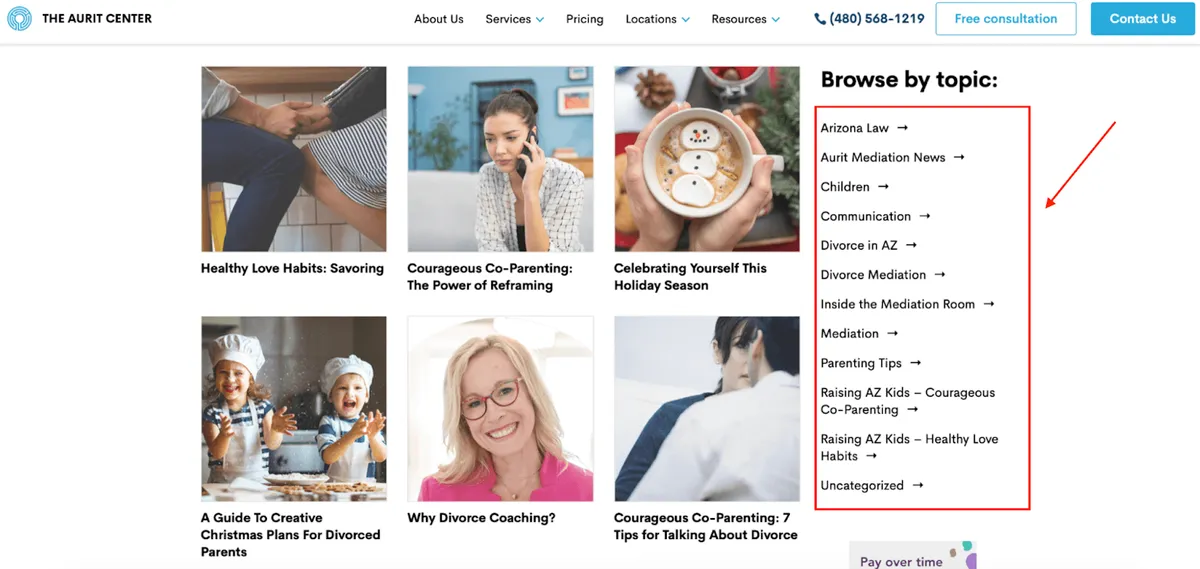
Source: Auritmediation
#2. Keep them relevant to the search intent
Another thing that’ll help you boost your SEO score? Keeping your content relevant to search intent.
It’s often easy to go a little off-tangent when writing something. But, just think about your own experiences — have you ever been to a recipe blog and the author explained their entire family history before coming onto the meat of the piece? Remember how frustrating that could be?
Well, if you deliver content that doesn’t deliver on search intent, your readers will feel the same levels of frustration and bounce from your articles early (and your bounce rates get accounted for in your SEO score).
Here are a few things you can do to ensure you keep articles relevant to search intent:
- Look for topics that'll be relevant in your niche (e.g., if your focus lies on catering to travelers seeking vacation alternatives in Arizona, crafting an intricate manual about RV Rentals in Phoenix could serve as a valuable resource for them while remaining pertinent to your business objectives).
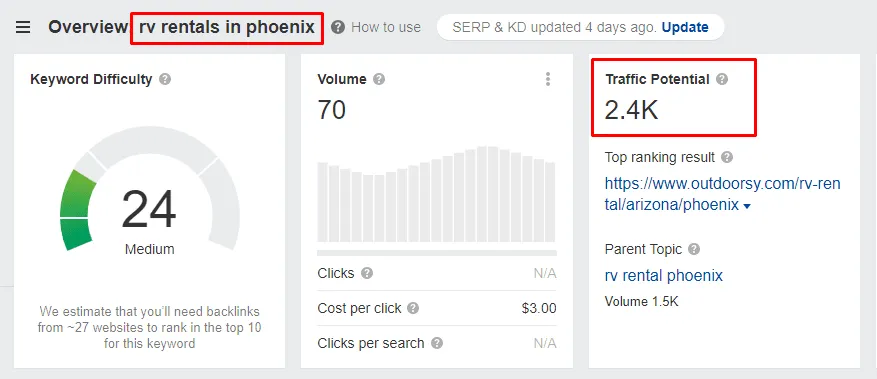
Source: Ahrefs
Research the content, structure, and content gaps of competing blogs on the same/similar topic.
Use resources like SurferSEO, Clearscope, Frase, etc., with a list of target keywords, questions that can help you with the outline structure, and links to other competing resources.
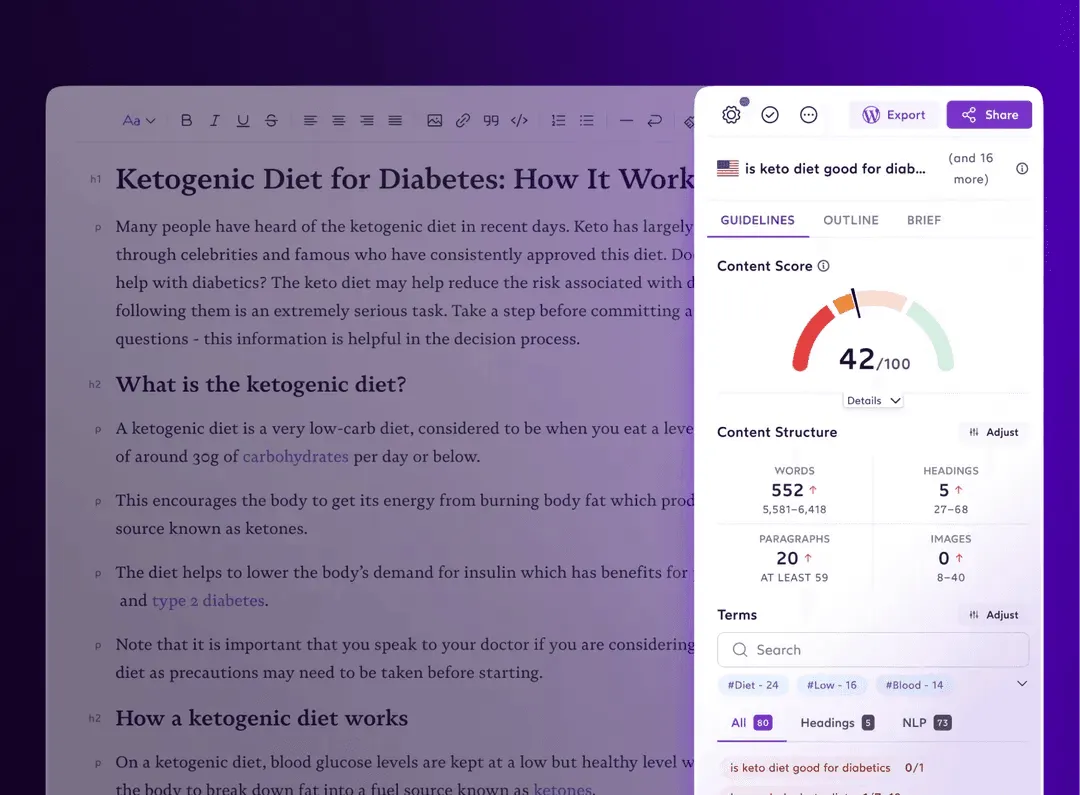
Source: Surfer SEO
#3. Make it easy to navigate
If there’s one thing all SEO-friendly articles have in common is that they’re all extremely easy to navigate. How do they do this, you ask?
They use short paragraphs (try not to go beyond five sentences per paragraph unless your brand’s style guide says otherwise).
- They have a logical structure for the content of the article. They also have a logical structure for the links you add (e.g., if your anchor text says “SEO content mistakes to avoid,” then the article you link to should say the same thing, too).
They have headings that lay out the premise of what the body of the article will say, so it makes it very easy for the reader to skim through it.
They have plenty of visuals (e.g., images) and easy navigation tools (e.g., table of contents).
They include a good mix of internal and external links that lead the reader to helpful resources.
They use fonts and colors that are easier on the eyes.
#4. Don’t forget the small details
When writing search-friendly articles, you’ll also benefit from focusing on the finer details, like adding meta titles (use a maximum of 60 characters) and meta descriptions (use a maximum of 160 characters).
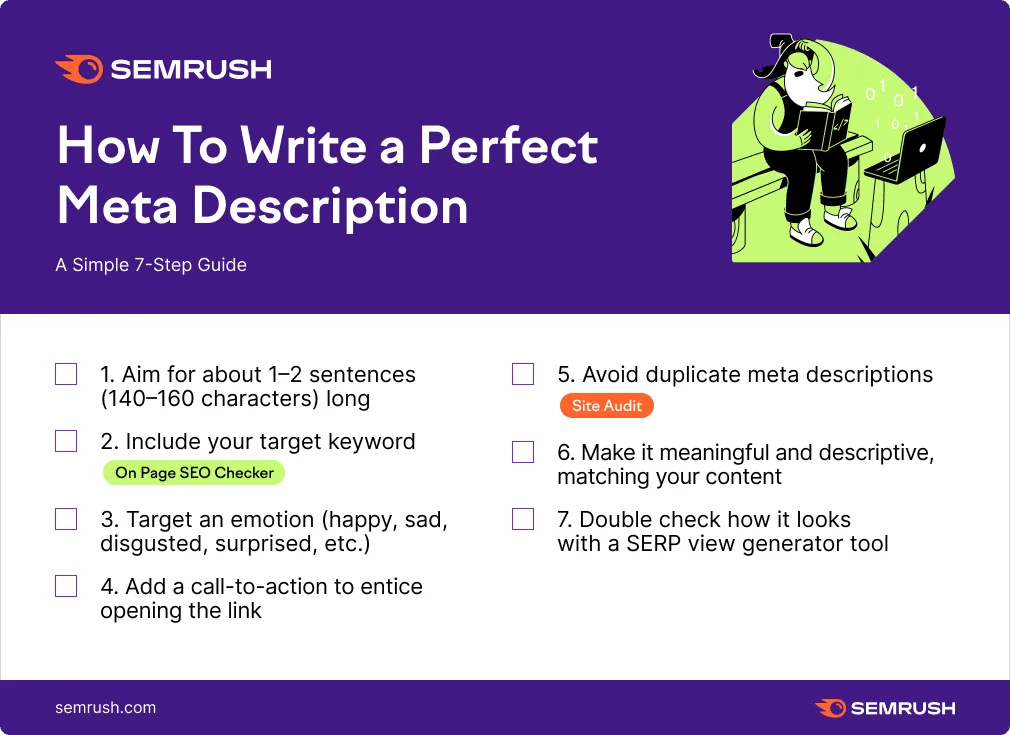
Source: Semrush
An illuminating example of this approach can be seen in the practices of House of Joppa, a Catholic jewelry store. Their adeptness in seamlessly weaving compelling narratives with SEO-rich tactics into meticulously curated blog post titles truly sets them apart.

Source: Houseofjoppa
Other than that, you can also add alt-text to all your images and write answers to FAQs (frequently asked questions) to boost your chances of appearing in a featured snippet.
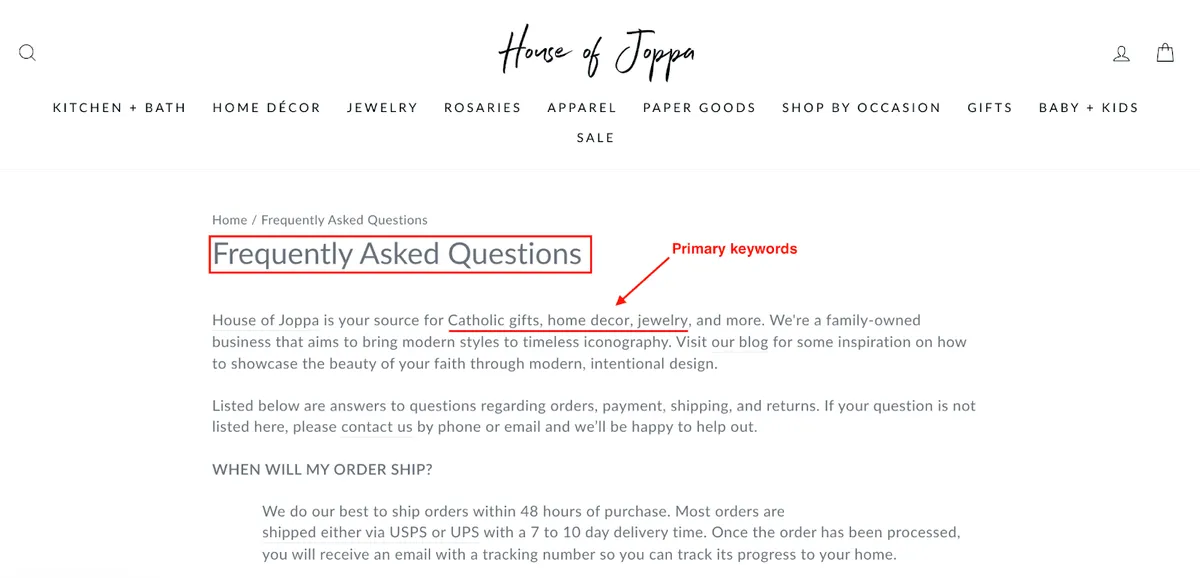
Source: Houseofjoppa
#5. Integrate the necessary keywords
One of the most important bits of SEO content is integrating the necessary keywords within your text. That said, don’t overstuff your content with keywords or simply write your blogs with the goal of ranking only for keywords.
Use Google’s Keyword Planner to find trending keywords in your industry, or use other resources like Ahrefs, Semrush, and Moz (search for unicorn keywords and see if the keywords you’re targeting have enough traction).
At this step, resources like Clearscope, Frase, and SurferSEO will help you identify which keywords to integrate within your text to increase your SEO score.
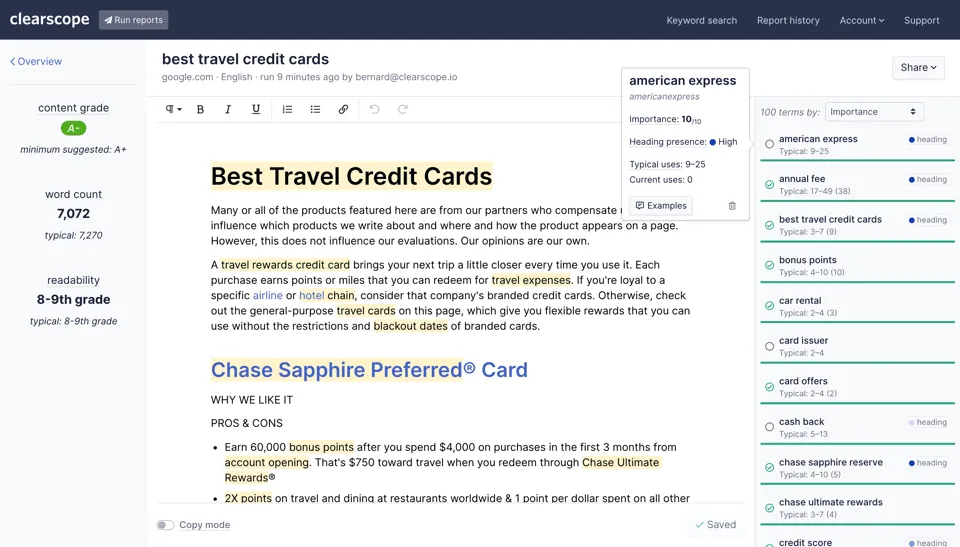
Source: Clearscope
Some experts even recommend writing an article and using ChatGPT for the task of integrating the necessary keywords within your existing text.
#6. Write high-quality content
More than anything else, a high-quality piece will do wonders for your SEO score (by not only increasing your search rankings but also increasing your chances of getting backlinks).
To make your content high-quality, include actionable takeaways, write in an active voice, share useable information and unique insights, cut down all the fluff, make it error-free, use shorter sentences, explain the jargon, make it interesting to read, edit and proofread the content, and update it regularly!
Here are a few resources that’ll help you improve the quality of content you write:
Grammarly (will help you reduce grammatical mistakes and cut down on fluff)
Hemingway (will help you write in an active voice and improve your readability score)
ProWritingAid (will help you understand your writing style and help with the nitty-gritty bits of writing)
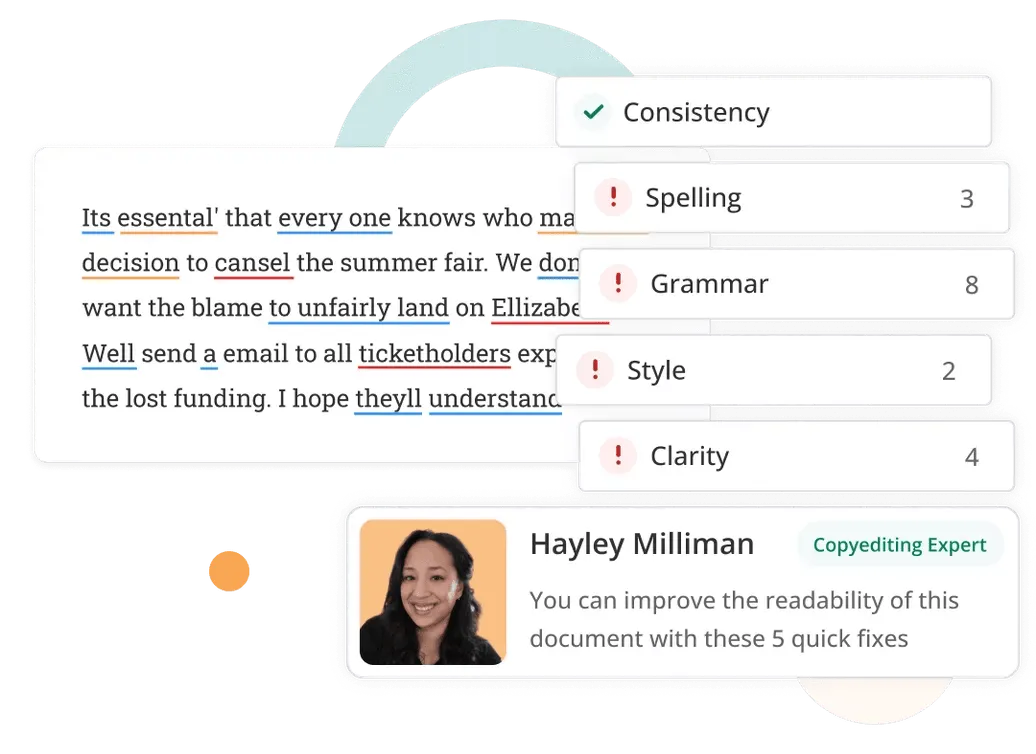
Source: Prowritingaid
Professional writers also have a swipe folder for inspiration, resources that help them research (e.g., Data Vault), and access to writing classes (like a masterclass by Freelance Magic) that teach them how to write better.
#7. Make it easily shareable
Another thing you can do to make your content SEO-friendly is to make it shareable.
So, here are a few things you can do that’ll help you make the content you write easy to share:
Creating shorter URLs (try solutions like Bitly)
Adding keywords in your titles (to make it easier to rank and link back to)
Optimizing for all devices (your readers can be on mobile devices or desktops)
Updating content regularly (you increase your chances of content getting shared by adding relevant and recent insights)
Using catchy titles (to pique the interest of your readers)
Infusing personality into your writing (to make it engaging to read)
Optimizing images (by using the necessary formats, pixels, and file names)
Adding social media buttons (to make it easy for your readers to share on their social pages)

Source: Flyerco
#8. Work on other parts of your site
Finally, if you wish to make your articles SEO-friendly, your articles aren’t the only thing you need to focus on.
Many of the search ranking factors also account for your site’s authority, domain rating, website age, etc.
So, here are a few other parts of your site you can focus on (to improve your overall SEO score):
- Link partnerships: If you’re strategic about link building, it can affect the way search engines perceive your brand authority. Companies like Scribe increased their blog traffic from 0 to 50k by exchanging links.
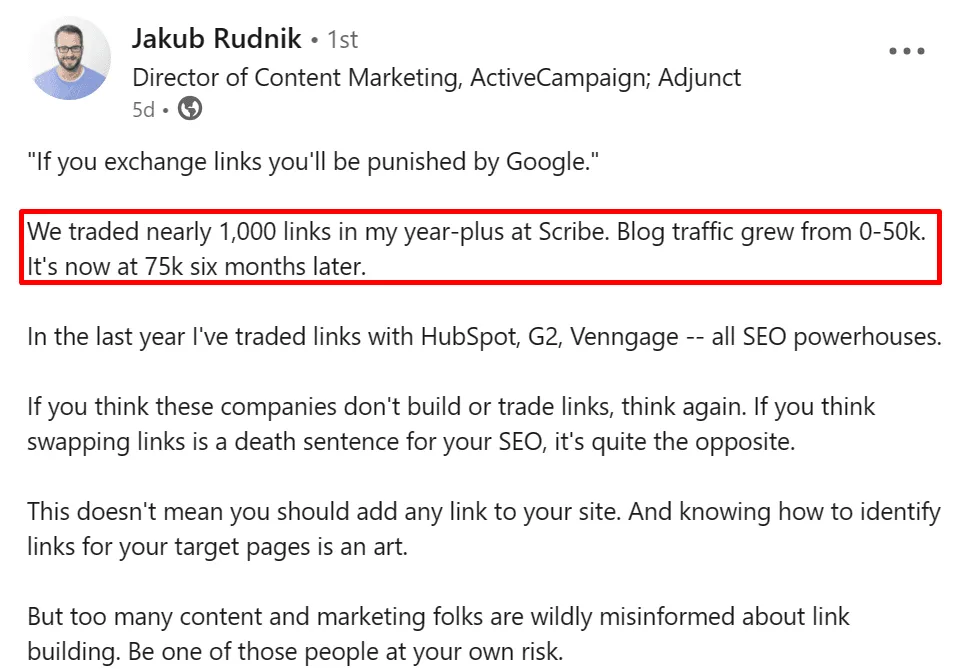
Source: LinkedIn
- Domain rating: Consistent content production, linking internally, high-quality content, social signals, on and off-page SEO, content updates, etc., will all help you increase your website’s domain rating.
- Social SEO: Using the right keywords, images, and hashtags in your social posts (alongside picking the right channels) will help you improve your social SEO, which will impact your website’s rating, too.
- Pro tip: You can consider a CRM with email marketing software that provides you customer insights which you can use to create highly relevant and relatable content for your social campaigns.
- Links: Fixing 404 URLs, reducing redirects, using the right anchor text, auditing your existing links, monitoring backlink profiles, etc., can all make an impact.
- Page load speed: The faster your website page loads, the lower your bounce rates are, and the better your SEO score becomes!
Improve your SEO game with AccuRanker
If your aim is to improve your SEO score and land a coveted top spot on the search engine results page (SERP) for your chosen keywords, you need to be strategic about your approach.
And that’s where technologies like AccuRanker can help you.

Our solution can help you with:
Identifying your competitors and their share of voice
Finding organic SERP history
Getting local SEO insights
Finding keyword rank tracking
Doing keyword discovery
So, if that’s something you’re interested in, then AccuRanker is here to help out. To understand how our solution can be useful for your business and specific business needs, then start a free trial!
Related blog posts
The Hidden Flaws in Search Volumes and How to Solve Them
Learn how AI Search Volume delivers reliable search volumes by combining GKP, GSC, and Trends so that you can prioritize the right keywords.
1 July 2025
AI Overviews Are Taking Over SERPs
From traffic drops to decreasing CTRs, AI Overviews are shaking up SEO. Learn what is happening and how AccuRanker helps you track AIO.
25 June 2025
How AccuRanker’s AI Models Fix Inaccurate SEO Data
Struggling with unreliable SEO data? Discover how AccuRanker’s CTR, Search Intent, Search Volume, and Share of Voice deliver accurate insights.
1 June 2025




